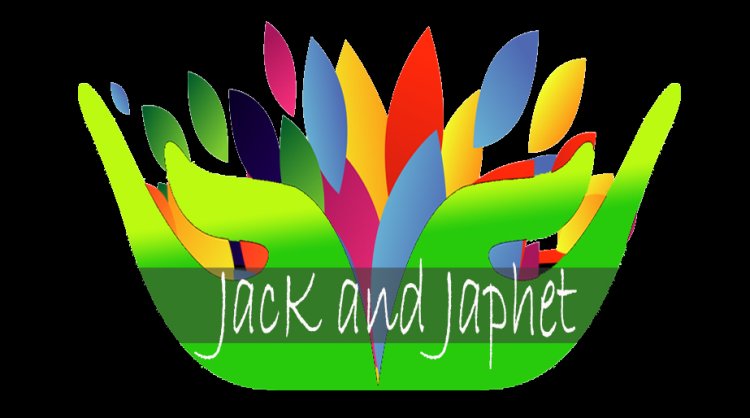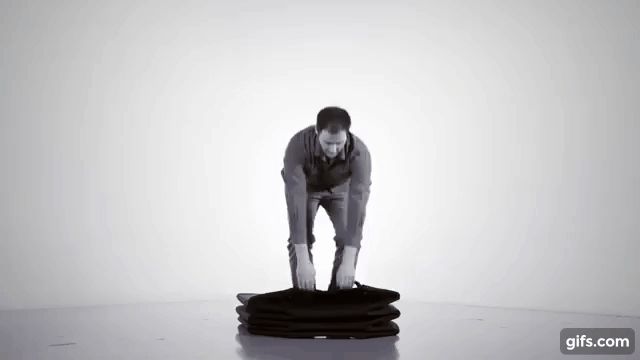Canadian police used deadly force at record rates in 2022, new research finds
Lethal force by Canadian police officers has seen a “steep” rise in recent years, with 2022 being the deadliest on record, according to new research released Thursday.The findings come from a first-of-its-kind database compiling police use of deadly force across Canada since 2000. The research is an effort to close the national data gap on officer-involved killings, which are not compiled by any government agency — despite growing calls for statistics to track racial disparities.The online database, called Tracking Injustice, was produced by a team of academics and advocacy organizations relying on information from government reports and media reports. Preliminary findings show “persistent” racial disparities — with Black and Indigenous people shot by police at rates three times their combined population — as well as a recent “steep” rise in deaths, said Alexander McClelland, a criminologist at Carleton University who is leading the project.“There is power in numbers,” McClelland said. “We can’t make informed decisions about policing and budgets and increased scrutiny without having this really basic information.”Researchers counted cases of intentional police use of force, including fatal shootings, deaths caused by other weapons such as Tasers, and deadly use of physical force. The database does not currently include other types of deaths involving police, such as those after a vehicle chase, a suicide in the presence of police or any killing involving an off-duty officer.In Toronto, that means deaths like that of Andrew Loku, a mentally ill Black man shot dead by police in 2015, are tracked. Not captured are people who died in presence of police, such as Regis Korchinski-Paquet, who fell to her death in May 2020. The researchers say the database is a work in progress that will be expanded to include other deaths involving police.According to the preliminary data, 704 people have been killed by police in Canada since 2000, with 224 occurring in Ontario and 65 involving Toronto police. In the vast majority of cases, the officers involved in these deaths have been cleared of wrongdoing; in the 65 Toronto cases, only one — the 2013 shooting of Sammy Yatim by former cop James Forcillo — resulted in a criminal conviction directly related to the victim’s death.Overall, the last 10 years have seen a 66 per cent increase in the number of police-involved deaths compared to the decade before. Researchers said the rise may, in part, be caused by the challenges of collecting older data — but that doesn’t explain a significant increase in the last three years, when police deaths rose from 34 in 2019 to 69 last year, the highest on recordWhere known, the research includes information about the deceased, such as race and age. But in many cases the identities aren’t known, the result of ongoing problems across Canada with transparency that have made tracking “an imperfect and challenging process,” McClelland said. Several Canadian police watchdogs that probe deaths involving officers have a policy not to name people killed by police unless the next of kin consents, meaning some identities never become public.According to preliminary findings, Black and Indigenous people accounted for 27 per cent the fatal police shootings where the race of the victim was known, despite representing a combined 8.7 per cent of the Canadian population.The numbers align with the findings of a landmark study released by the Ontario Human Rights Commission that found that between 2013 and 2017, Black people in Toronto were nearly 20 times more likely to be fatally shot by police than white people. Data analysis by Toronto police has also found officers were more likely to use force against Black residents, findings that prompted an apology last year from the police chief.Black and Indigenous communities have long been decrying the disproportionate police use of force on members of their communities — and “we only need turn on our TV to see the brutal, consistent murder of Black people that happens over and over and over again,” said Tanya L. Sharpe, an associate professor of social work at University of Toronto.But having the hard data gives leverage that can force change, Sharpe said.“In the absence of data, if you don’t count it, then it doesn’t count,” Sharpe said. Nearly three-quarters of the deaths are fatal shootings. The database does not provide the context of the deaths, including whether the person who died was armed at the time, but McClelland said those details, where available, will be included at a later date.The database includes high-profile cases of lethal police force against the perpetrators of mass killings, including Francesco Villi, the man shot dead by York Regional Police after fatally shooting six people inside a Vaughan condo last December. For nearly 10 years, Joanne McIsaac has been pushing all levels of government across Canada to start tracking police-involved deaths. She launched the mission after her brother, 47


Lethal force by Canadian police officers has seen a “steep” rise in recent years, with 2022 being the deadliest on record, according to new research released Thursday.
The findings come from a first-of-its-kind database compiling police use of deadly force across Canada since 2000. The research is an effort to close the national data gap on officer-involved killings, which are not compiled by any government agency — despite growing calls for statistics to track racial disparities.
The online database, called Tracking Injustice, was produced by a team of academics and advocacy organizations relying on information from government reports and media reports.
Preliminary findings show “persistent” racial disparities — with Black and Indigenous people shot by police at rates three times their combined population — as well as a recent “steep” rise in deaths, said Alexander McClelland, a criminologist at Carleton University who is leading the project.
“There is power in numbers,” McClelland said. “We can’t make informed decisions about policing and budgets and increased scrutiny without having this really basic information.”
Researchers counted cases of intentional police use of force, including fatal shootings, deaths caused by other weapons such as Tasers, and deadly use of physical force. The database does not currently include other types of deaths involving police, such as those after a vehicle chase, a suicide in the presence of police or any killing involving an off-duty officer.
In Toronto, that means deaths like that of Andrew Loku, a mentally ill Black man shot dead by police in 2015, are tracked. Not captured are people who died in presence of police, such as Regis Korchinski-Paquet, who fell to her death in May 2020. The researchers say the database is a work in progress that will be expanded to include other deaths involving police.
According to the preliminary data, 704 people have been killed by police in Canada since 2000, with 224 occurring in Ontario and 65 involving Toronto police.
In the vast majority of cases, the officers involved in these deaths have been cleared of wrongdoing; in the 65 Toronto cases, only one — the 2013 shooting of Sammy Yatim by former cop James Forcillo — resulted in a criminal conviction directly related to the victim’s death.
Overall, the last 10 years have seen a 66 per cent increase in the number of police-involved deaths compared to the decade before. Researchers said the rise may, in part, be caused by the challenges of collecting older data — but that doesn’t explain a significant increase in the last three years, when police deaths rose from 34 in 2019 to 69 last year, the highest on record
Where known, the research includes information about the deceased, such as race and age. But in many cases the identities aren’t known, the result of ongoing problems across Canada with transparency that have made tracking “an imperfect and challenging process,” McClelland said.
Several Canadian police watchdogs that probe deaths involving officers have a policy not to name people killed by police unless the next of kin consents, meaning some identities never become public.
According to preliminary findings, Black and Indigenous people accounted for 27 per cent the fatal police shootings where the race of the victim was known, despite representing a combined 8.7 per cent of the Canadian population.
The numbers align with the findings of a landmark study released by the Ontario Human Rights Commission that found that between 2013 and 2017, Black people in Toronto were nearly 20 times more likely to be fatally shot by police than white people. Data analysis by Toronto police has also found officers were more likely to use force against Black residents, findings that prompted an apology last year from the police chief.
Black and Indigenous communities have long been decrying the disproportionate police use of force on members of their communities — and “we only need turn on our TV to see the brutal, consistent murder of Black people that happens over and over and over again,” said Tanya L. Sharpe, an associate professor of social work at University of Toronto.
But having the hard data gives leverage that can force change, Sharpe said.
“In the absence of data, if you don’t count it, then it doesn’t count,” Sharpe said.
Nearly three-quarters of the deaths are fatal shootings. The database does not provide the context of the deaths, including whether the person who died was armed at the time, but McClelland said those details, where available, will be included at a later date.
The database includes high-profile cases of lethal police force against the perpetrators of mass killings, including Francesco Villi, the man shot dead by York Regional Police after fatally shooting six people inside a Vaughan condo last December.
For nearly 10 years, Joanne McIsaac has been pushing all levels of government across Canada to start tracking police-involved deaths.
She launched the mission after her brother, 47-year-old Michael McIsaac, was shot dead by a Durham Regional police officer shortly after he went outside naked on a frigid December day in 2013. His family believes he had suffered an epileptic seizure; Ontario’s police watchdog did not charge the officer, saying he was justified in shooting Michael because he’d advanced on him while holding a table leg.
Since Michael’s death, “the issue has not gone away — in fact, it’s gotten worse,” said McIsaac, who is serving as an adviser to the Tracking Injustice project.
“I’m hoping that it’s going to clearly demonstrate the magnitude of the problem and hopefully force the government to stop dismissing it,” she said.
Wendy Gillis is a Toronto-based reporter covering crime and policing for the Star. Reach her by email at wgillis@thestar.ca or follow her on Twitter: @wendygillis















:quality(85):upscale()/2024/11/27/891/n/1922398/123acea767477facdac4d4.08554212_.jpg)



:quality(85):upscale()/2025/02/06/058/n/1922283/129f882767a552c24f3258.03674924_.png)
